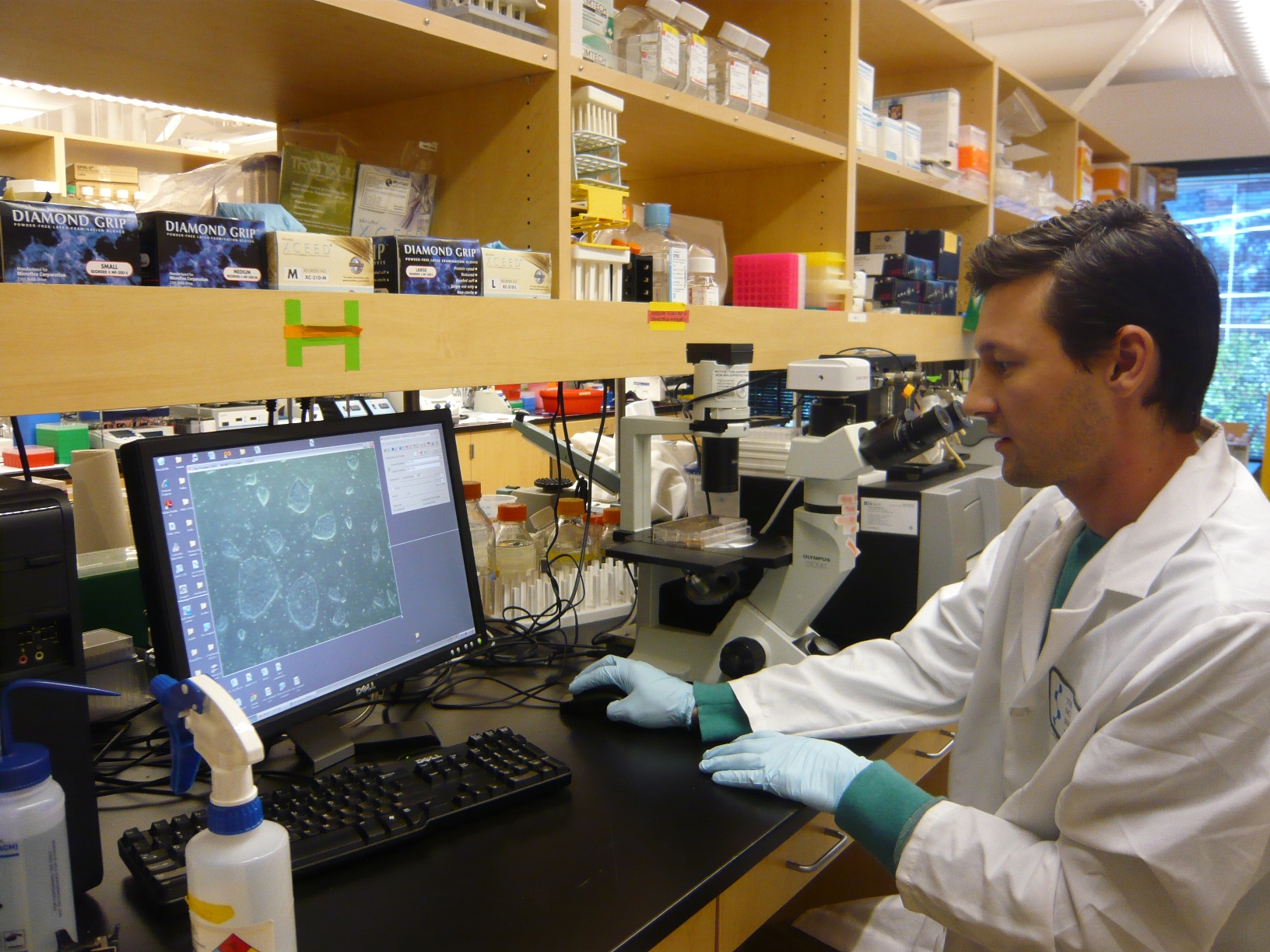Research
Parkinson's disease is currently regarded as an incurable, progessive disease (more about this…).
This page gives an overview of ongoing research projects for the development of healing methods for Parkinson's disease.
1. Cell replacement therapies

In the course of Parkinson's disease, more and more of the dopamine-producing neurons of the substantia nigra (a region in the middle brain) slowly die off, leading to dopamine deficiency and, amongst other things, to the typical symptoms such as tremors, stiffness or slowing of movement. The aim of cell replacement therapies is to replace the dead neurons with new, functioning neurons.
Sources for new neurons can be stem cells, which can originate, for example, from the body of an individual patient ("autologous"), from aborted foetuses, from embryos or from umbilical neonates.
The following projects and methods are presented here:
- Summit4StemCell, which works with autologous (so-called pluripotent) stem cells.
- Foetal cells
- Parthenogenic stem cells
- Embryonic stem cells
2. Lewy's body / alpha-synuclein therapies
So-called Lewy bodies (small protein clumps) are found in the brain of Parkinson's patients, which are made-up by more than 50% of the body's own protein "Alpha-Synuclein". There is a long-held theory that this massive accumulation of the protein "alpha-synuclein" is causally related to the death of neurons in the brain of Parkinson's patients.
An Austrian biotechnology company is currently developing vaccines that are designed to enable the immune system of Parkinson's patients to break down the excess alpha-synuclein and thus alleviate one of the suspected causes of the disease. Read more here.
3. Therapies against cell death in the substantia nigra
Another promising field of research is the identification of the causes of the progressive death of neurons in the substantia nigra of Parkinson's patients and the development of therapies that can stop or even reverse this process. The following active ingredients demonstrate significant potential for this:
Important: If the term "healing" is used to describe the outcome of a specific form of therapy that is being developed, it means that this therapy will reduce or even remedy the impairments caused by Parkinson's disease in at least in a relevant subset of Parkinson's patients for a significant period of time.
Example: The dopamine-producing neurons of the substantia nigra (a region in the middle brain), that died in the course of Parkinson's disease, are replaced by new neurons cultured from stem cells by means of transplantation. This therapy is considered to be effective only when these new neurons grow and mature (i.e. are not rejected by the immune system), connect with the adjacent brain regions and subsequently produce and pass on dopamine. This healing process may take place over years after the transplant. In the case of Parkinson's patients in the initial stage of the disease, this "repair" may be sufficient to bring about externally recognizable, lasting improvements in motor skills relatively soon after transplantation. In the case of significantly advanced patients, improved motor skills may only be seen later, to a lesser extent or not at all. In addition, other symptoms of the disease such as dementia, balance disorders or loss of the sense of smell may not be improved by such a transplant.
Therefore: Even if a therapy form is likely to permanently improve "only" one cardinal symptom (e.g. impaired motor skills) and this also "only" in a subgroup of Parkinson's patients (e.g. early stage to moderately advanced), it is nevertheless considered as a as potential healing therapy for this subgroup.
